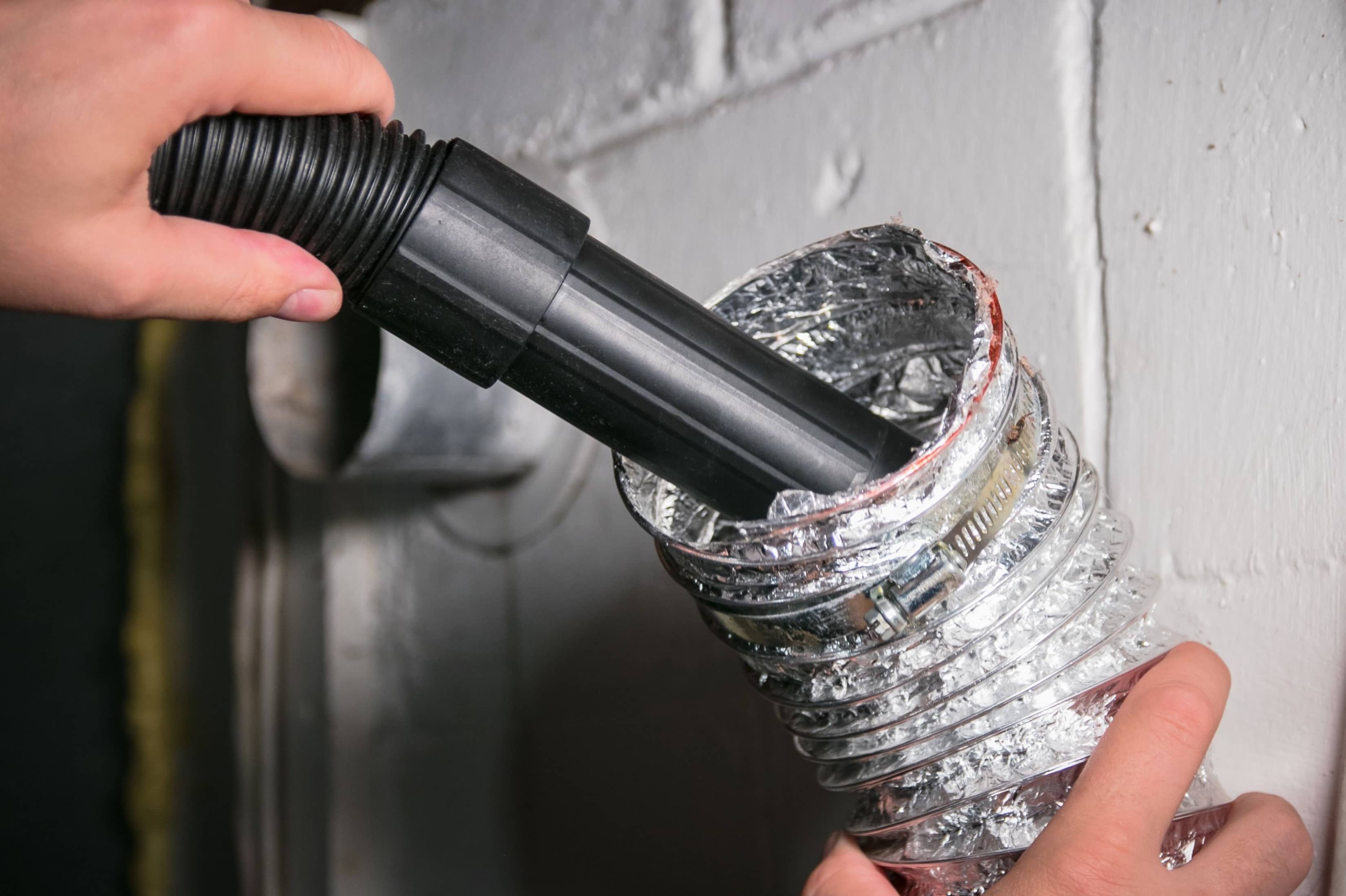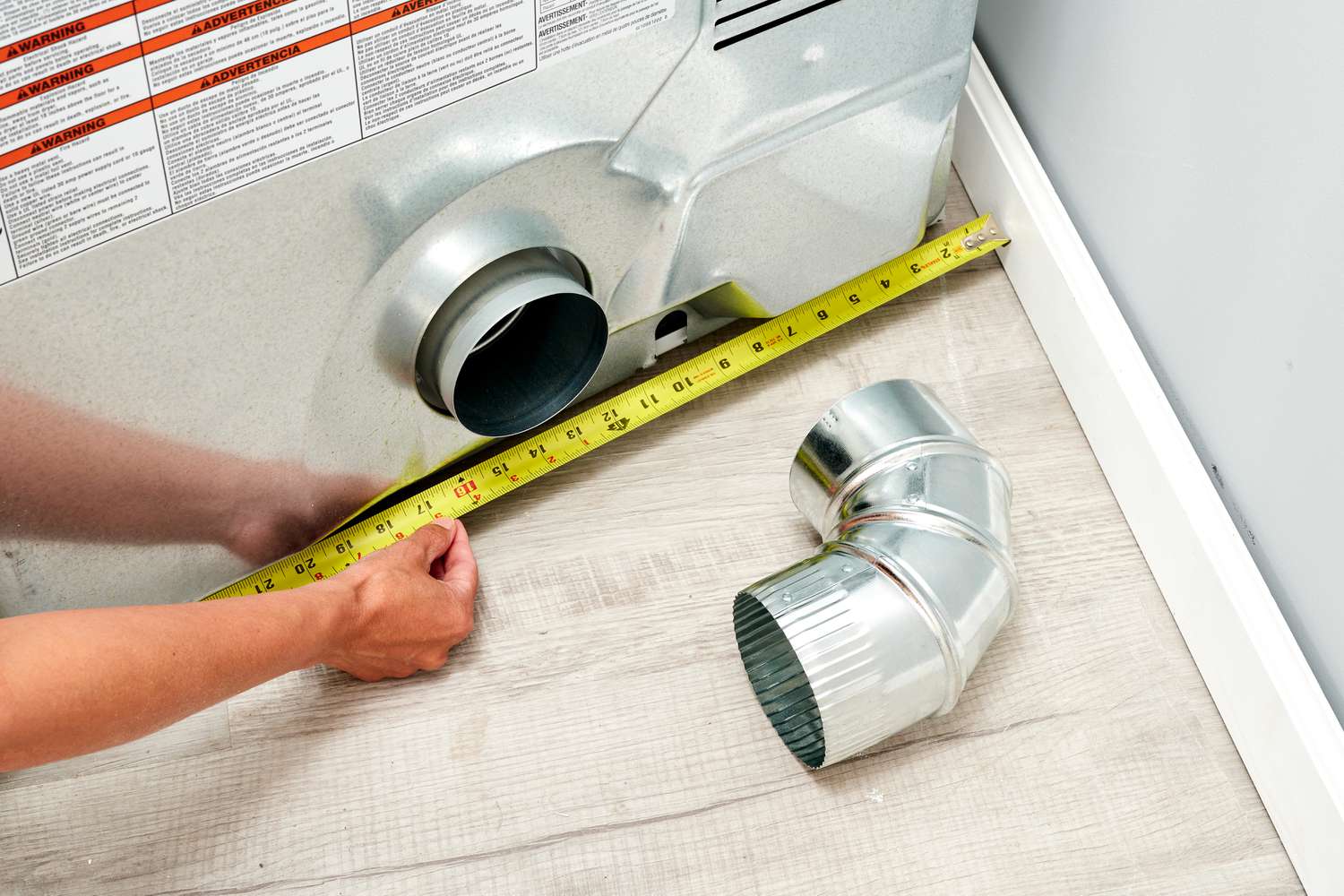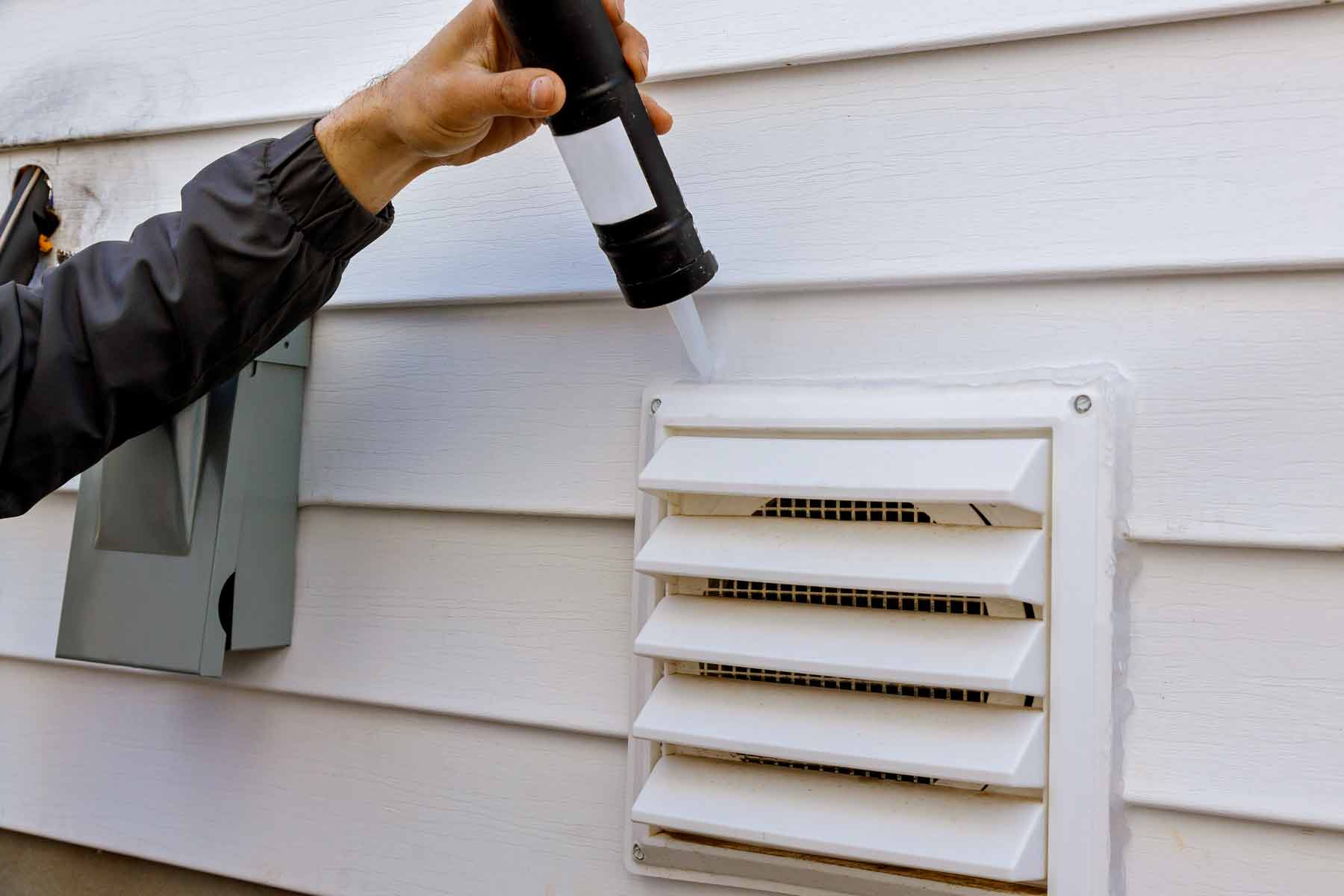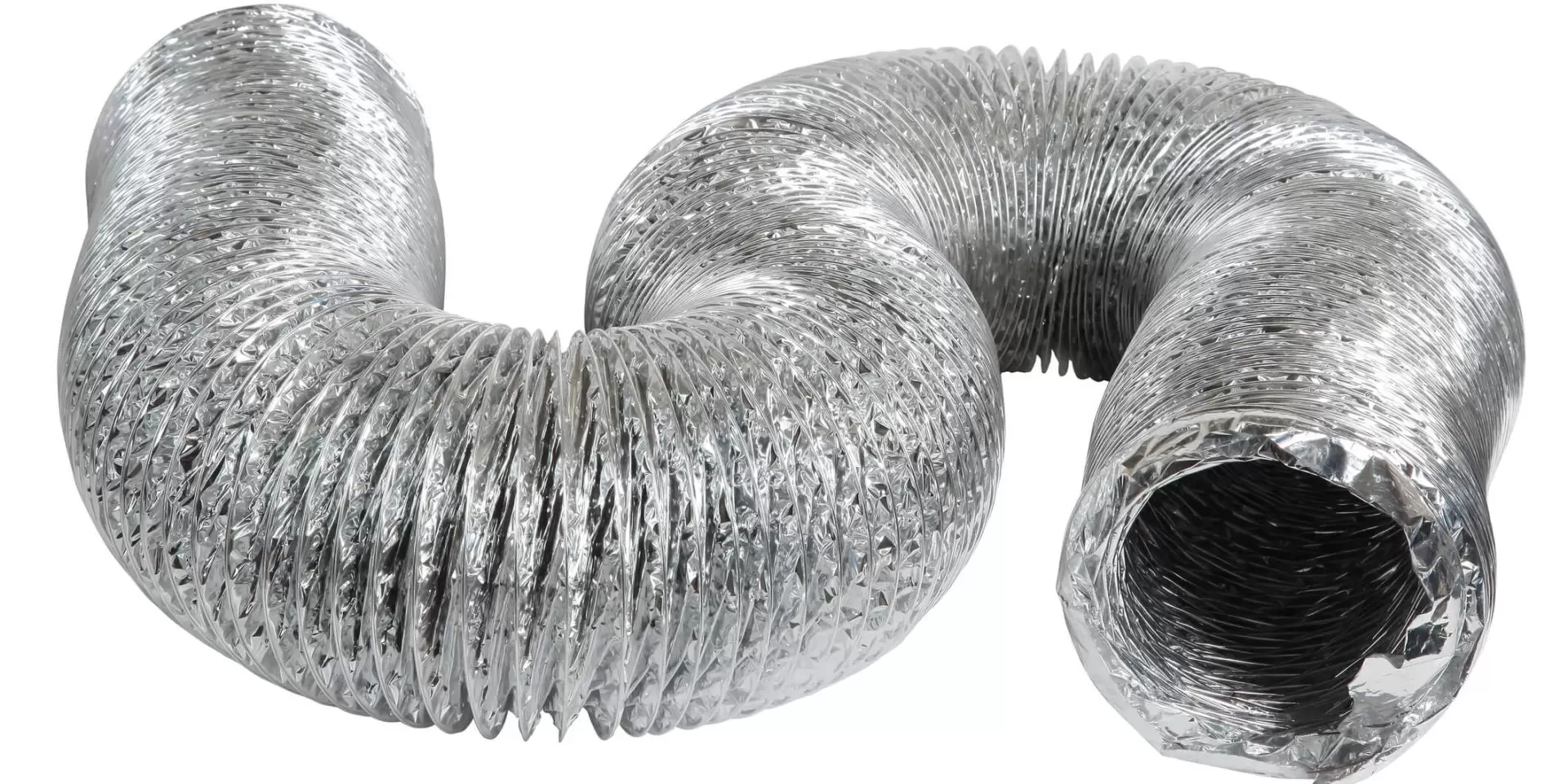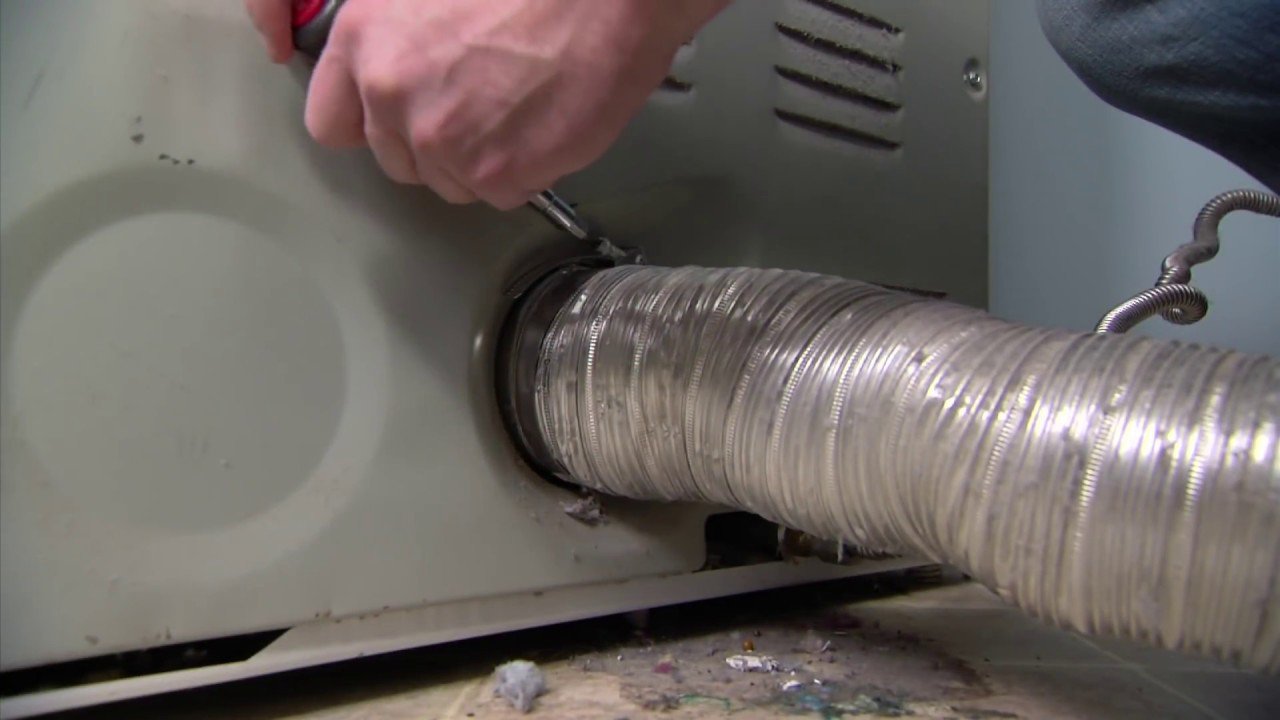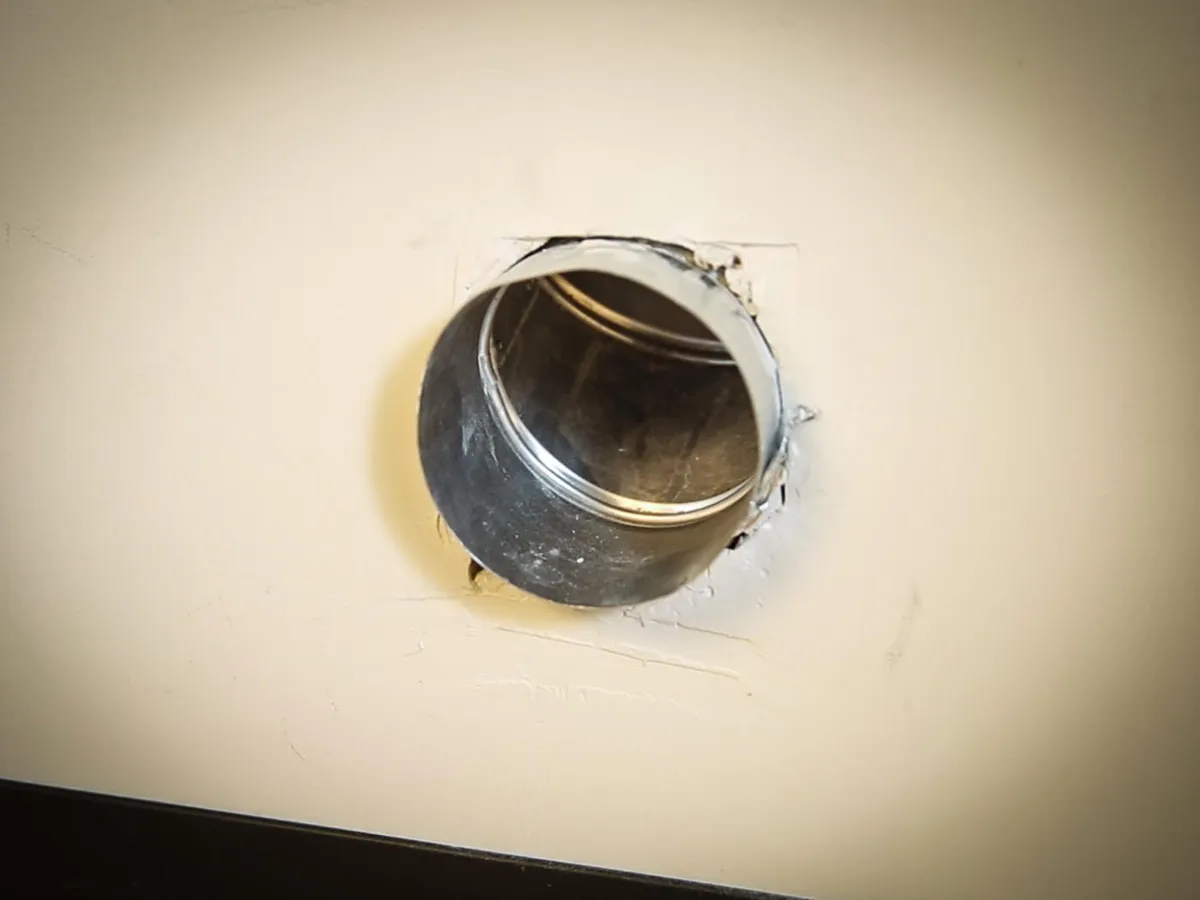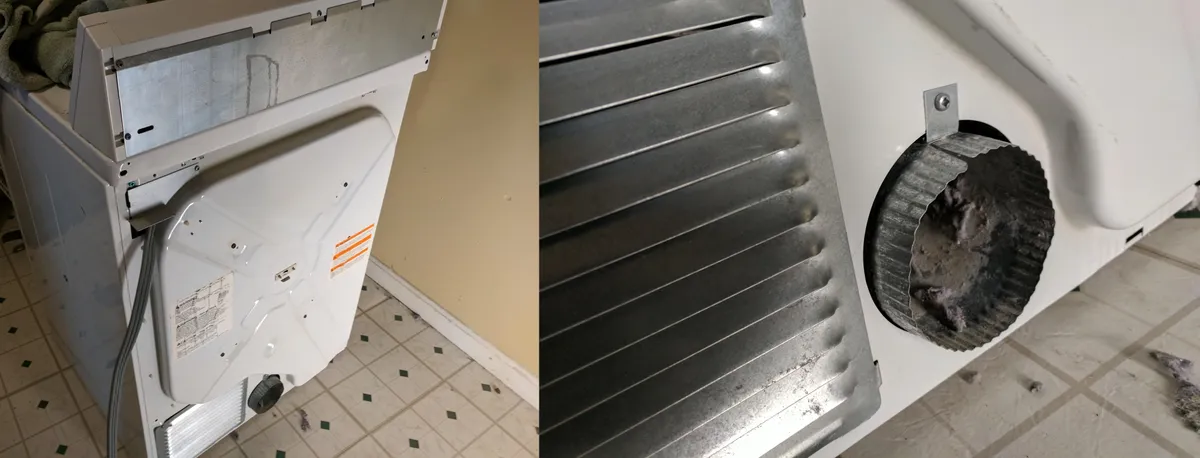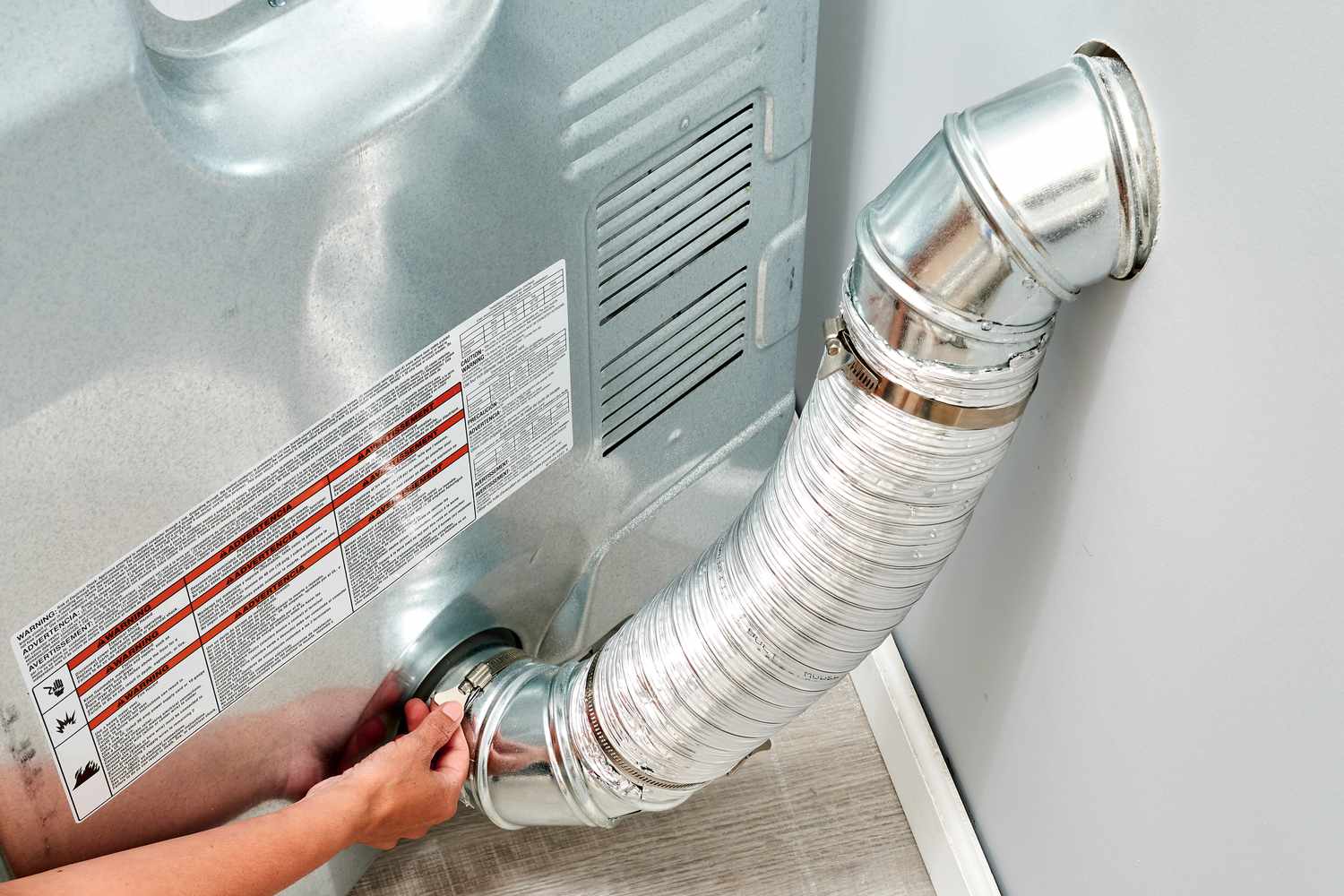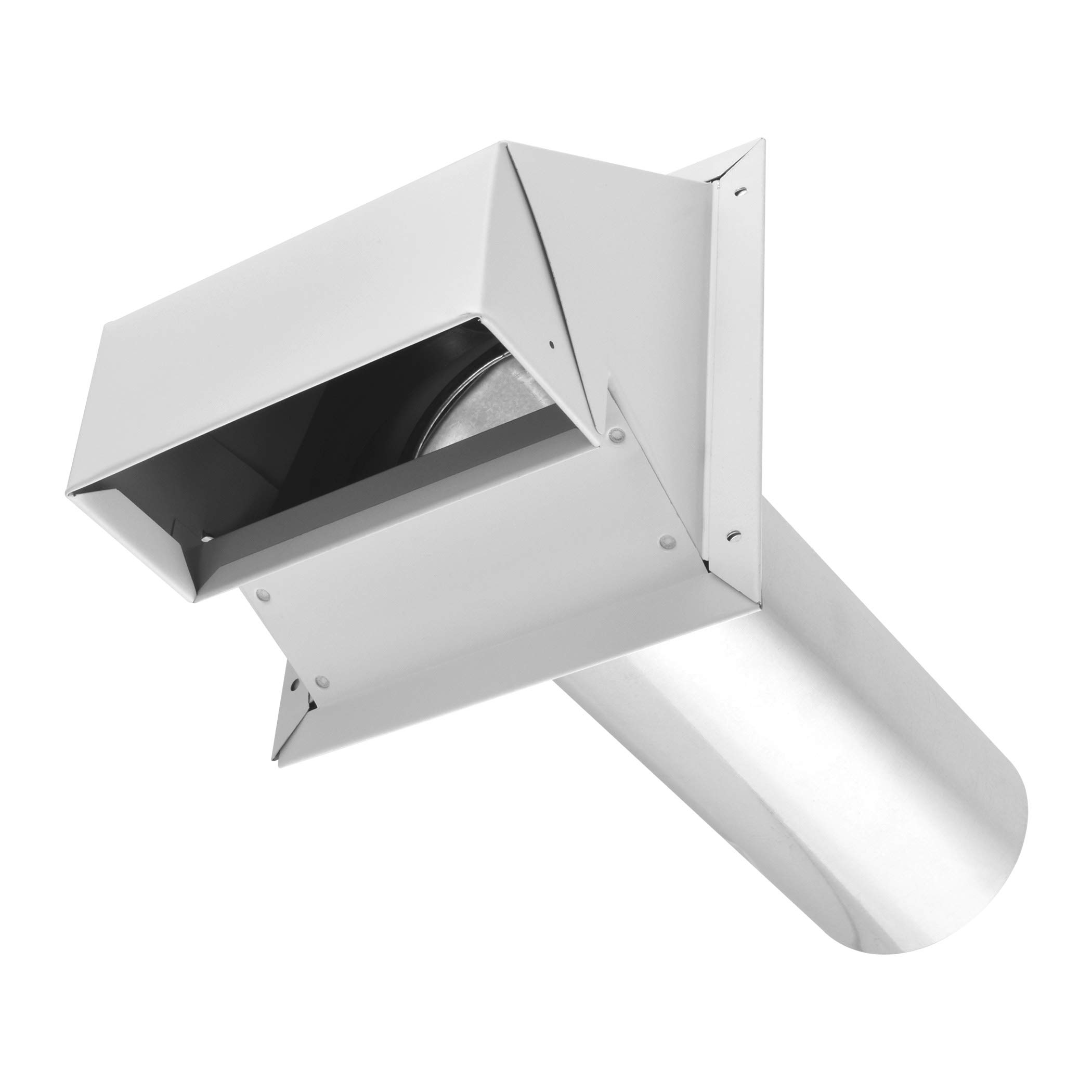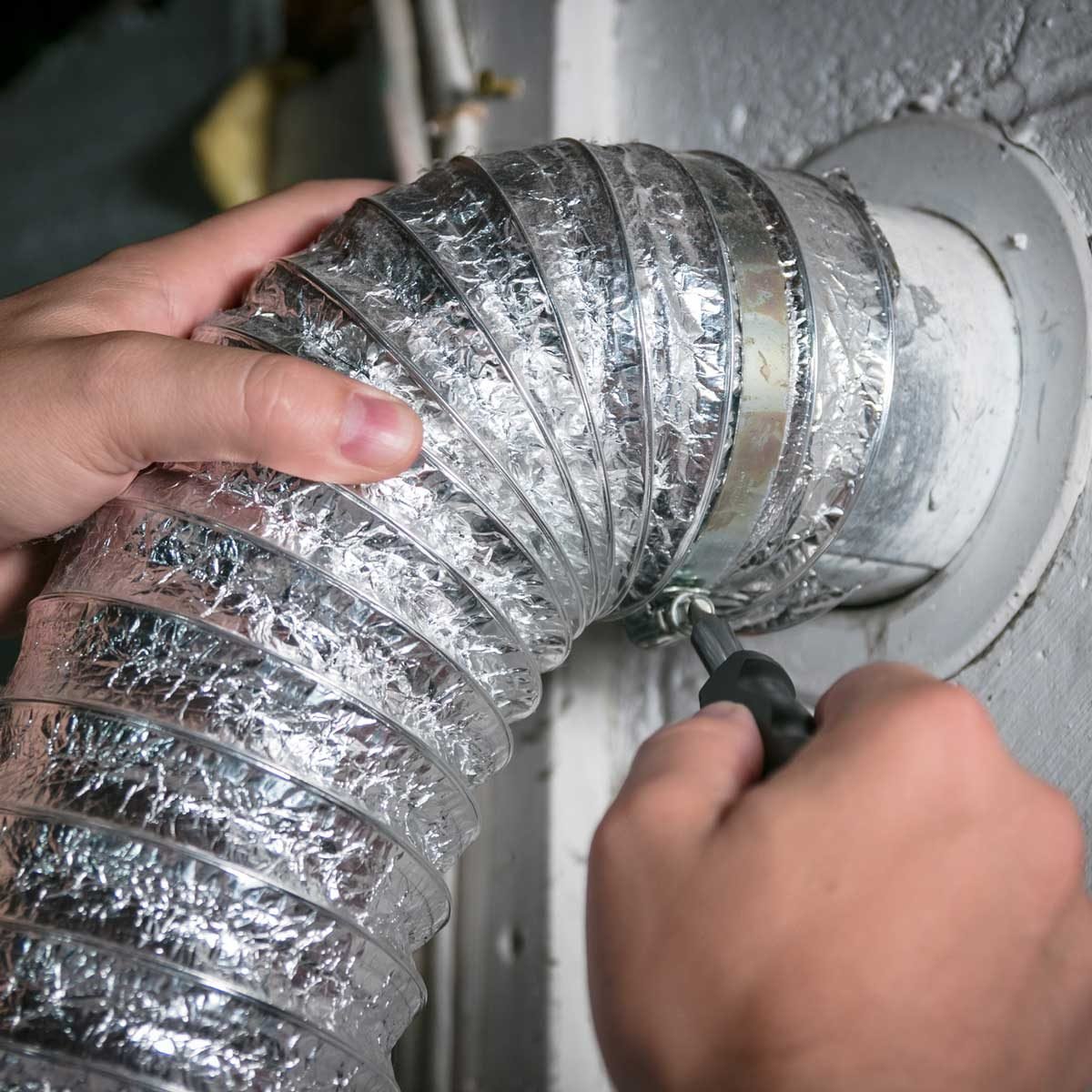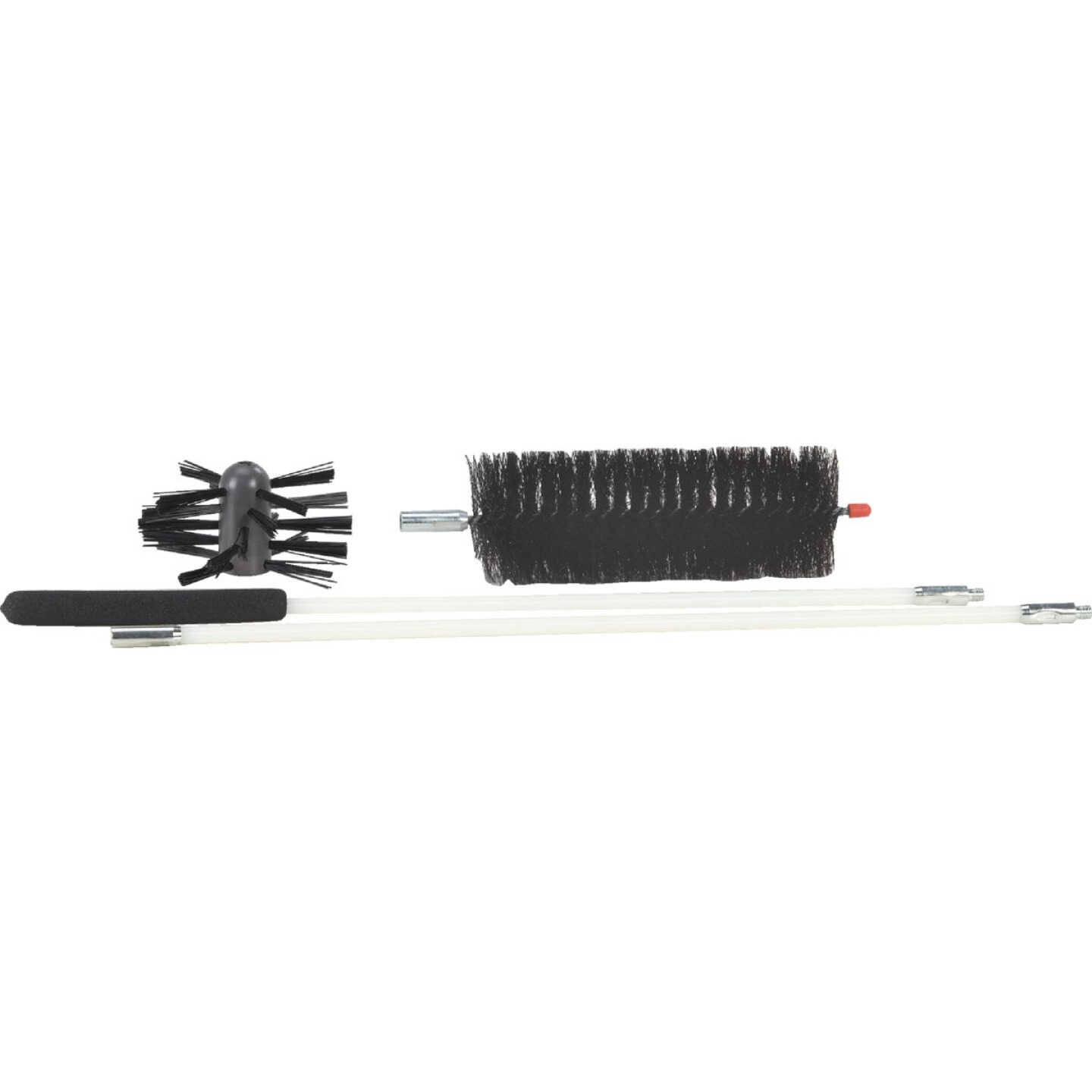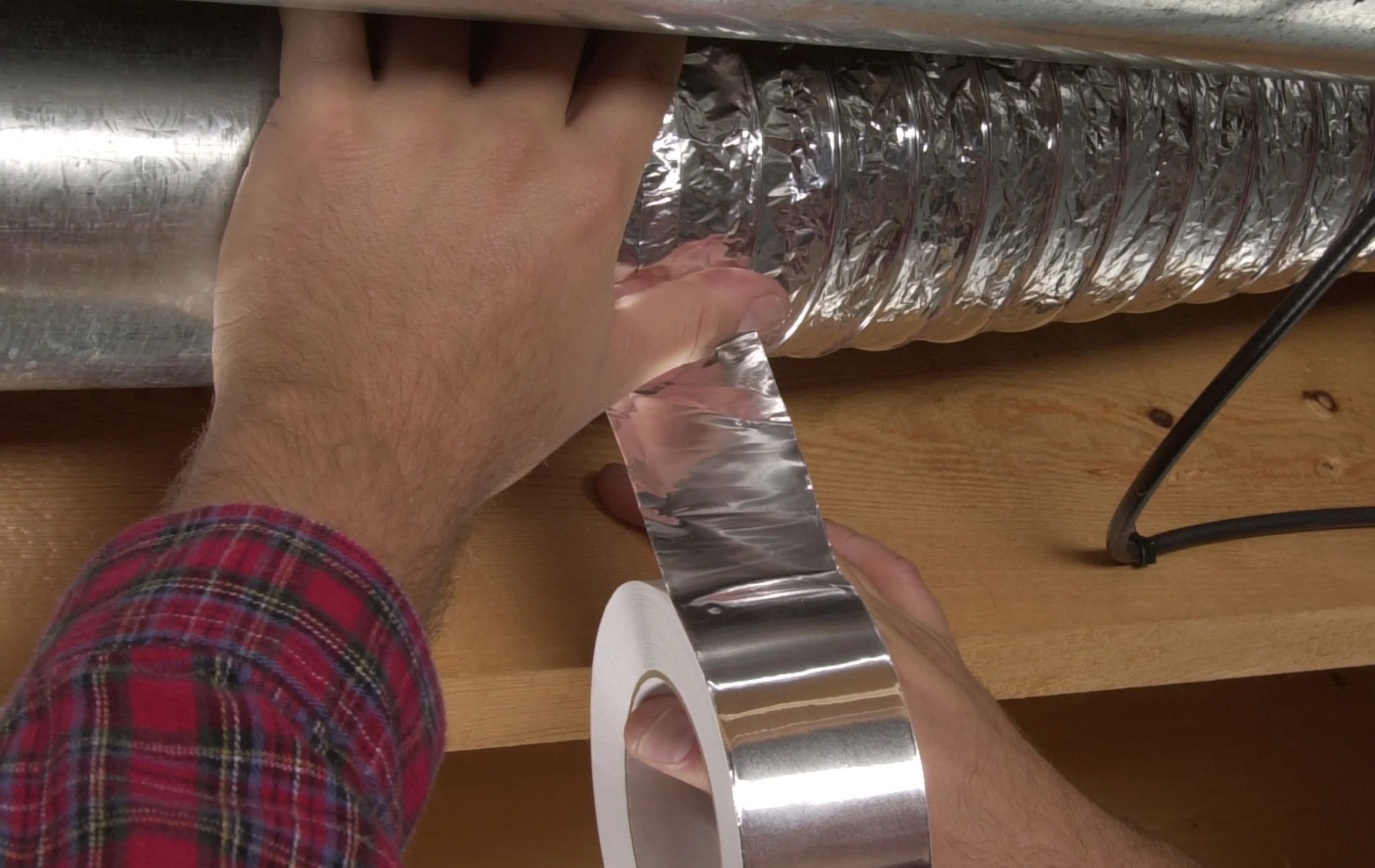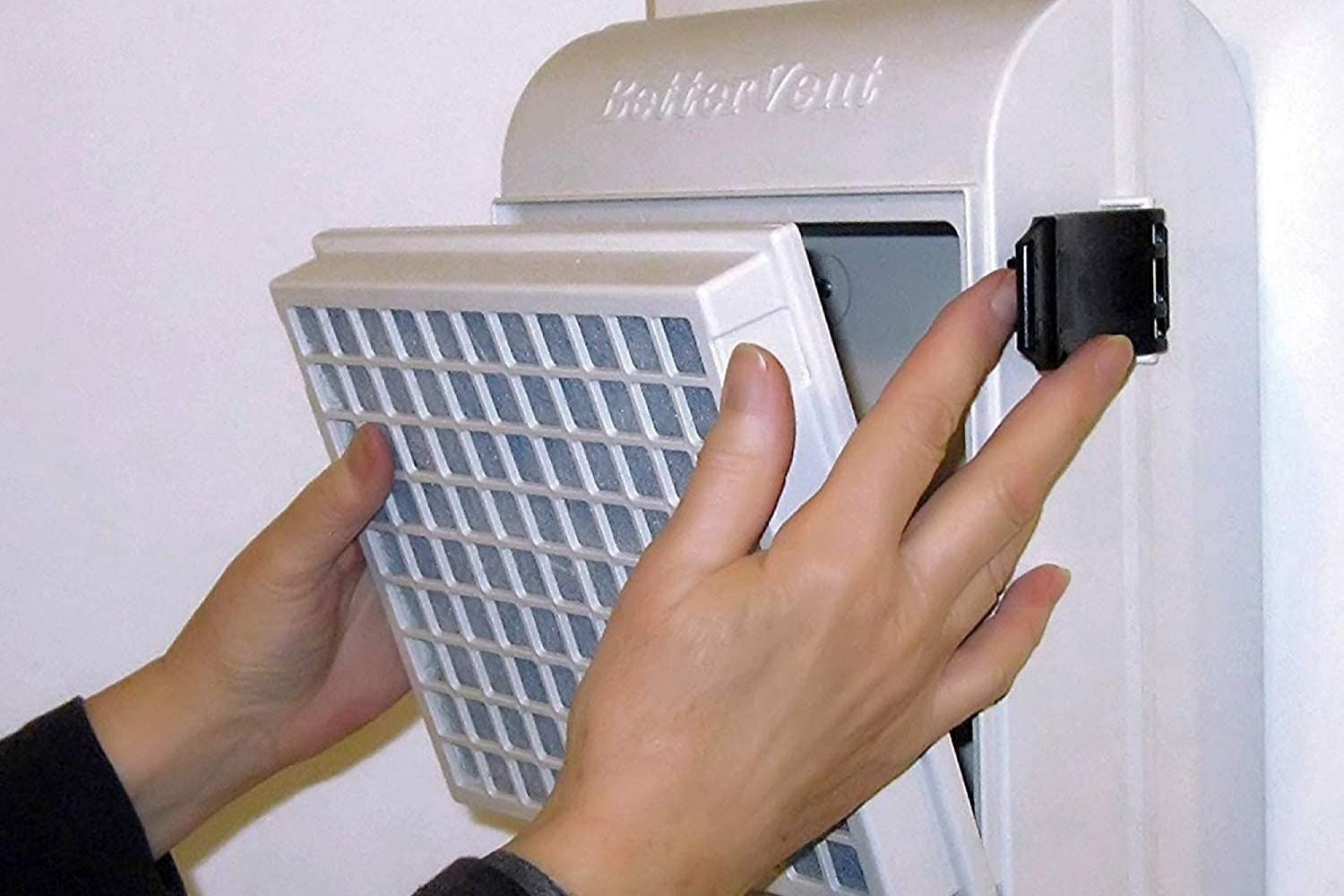Home>Home Maintenance>What Type Of Dryer Vent Is Best
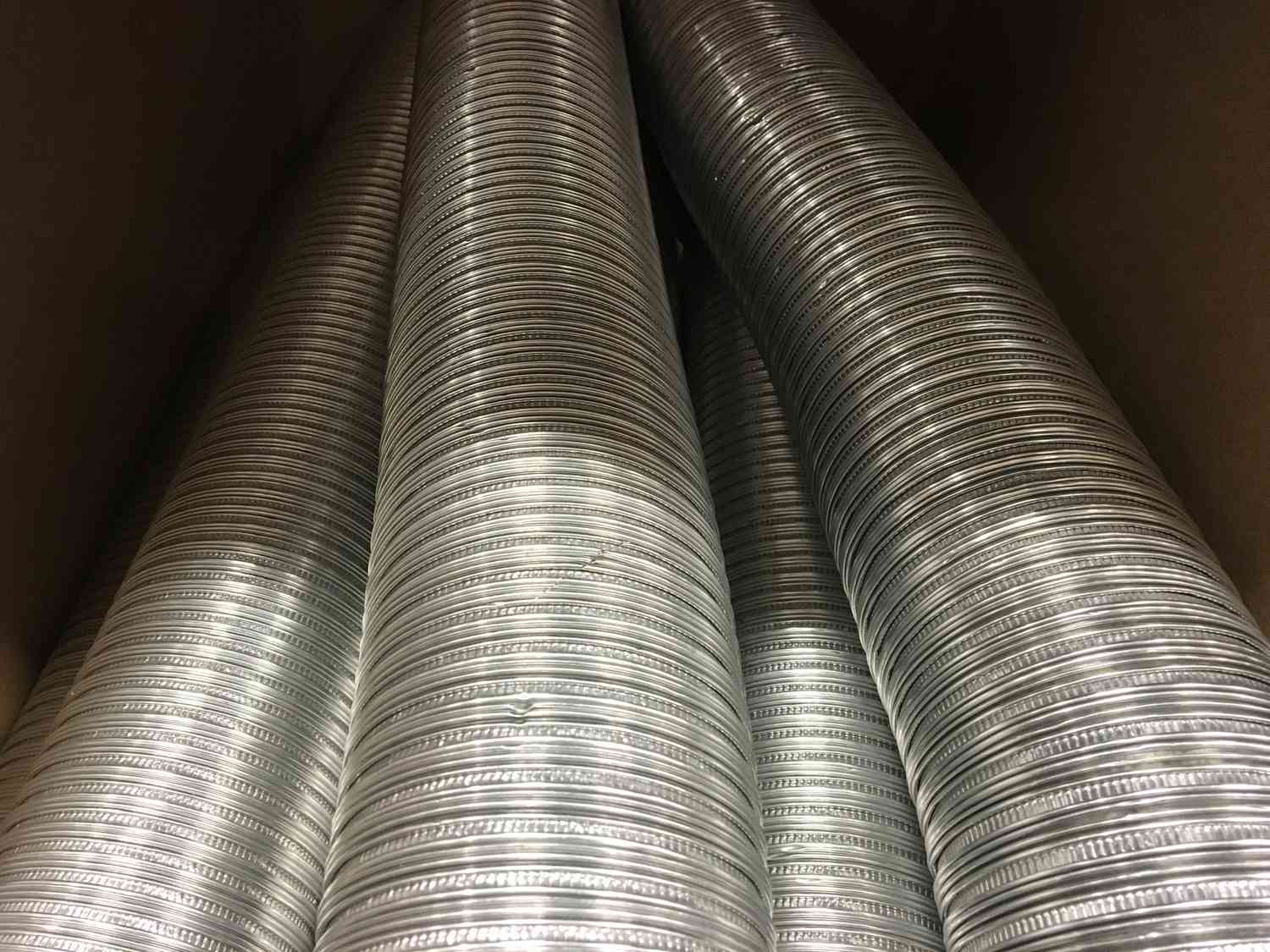

Home Maintenance
What Type Of Dryer Vent Is Best
Modified: March 6, 2024
Find out which type of dryer vent is the best for home maintenance. Choose the right option to ensure efficient drying and prevent fire hazards.
(Many of the links in this article redirect to a specific reviewed product. Your purchase of these products through affiliate links helps to generate commission for Storables.com, at no extra cost. Learn more)
Introduction
Welcome to the world of home maintenance, where taking care of your living space becomes an essential part of your daily routine. One aspect of home maintenance that often goes unnoticed is the dryer vent. Although it may seem like a small and insignificant component, the type of dryer vent you choose can have a significant impact on the efficiency, safety, and durability of your dryer.
Dryer vents play a crucial role in expelling hot air and moisture from your dryer to the outside of your home. Without a properly functioning vent, your dryer’s performance may be compromised, and you may even be putting your home at risk of fire hazards. With several types of dryer vents available on the market, it can be overwhelming to determine which one is best suited for your needs.
In this article, we will explore the different types of dryer vents and discuss the factors to consider when choosing the best vent for your home. We will delve into the pros and cons of metal vents, plastic vents, flexible vents, and semi-rigid vents, giving you the information you need to make an informed decision.
But before we dive into the specifics, it is important to understand why investing in a high-quality dryer vent is crucial. The primary function of a dryer vent is to remove the hot air and moisture produced by the dryer during its drying cycle. This not only helps in drying your clothes efficiently but also prevents the build-up of mold and mildew in your laundry room. Moreover, a well-ventilated dryer reduces the risk of fire hazards caused by the accumulation of lint.
Now that we have established the importance of a dryer vent, let’s explore the different types available on the market and highlight their advantages and disadvantages. By the end of this article, you will have a clearer understanding of the best dryer vent for your home, ensuring optimal performance and safety for your dryer.
Key Takeaways:
- Choose a metal dryer vent for durability, fire safety, and efficient airflow. It’s a reliable option for long-term safety and performance.
- Consider installation flexibility and maintenance needs when choosing a dryer vent. Balance durability, fire safety, and ease of cleaning for optimal performance.
Read more: What Is A Dryer Vent
Types of Dryer Vents
When it comes to choosing the best dryer vent, you have several options to consider. Each type of vent offers unique advantages and considerations. Understanding the differences between these options will help you make an informed decision based on your specific needs. Let’s explore the four main types of dryer vents:
- Metal Vents: Metal dryer vents are the most common type found in many homes. They are usually made of aluminum, galvanized steel, or stainless steel. Metal vents are known for their durability and fire resistance. They can withstand high temperatures and are less likely to sustain damage from pests or rodents. However, metal vents can be more expensive than other options and may require professional installation.
- Plastic Vents: Plastic dryer vents, typically made from PVC or other plastic materials, are an affordable option for homeowners. They are lightweight, easy to install, and resistant to certain types of corrosion. However, plastic vents are not as durable as metal vents and may crack or break over time. Additionally, plastic vents are not recommended for use in high-temperature settings, as they can melt or become a fire hazard.
- Flexible Vents: The name says it all – flexible dryer vents are made of a flexible foil or plastic material. These vents are popular due to their ease of installation and flexibility, allowing for easy maneuverability around obstacles. However, flexible vents may accumulate lint more easily than other types, making them more prone to clogging and reducing airflow. It is important to regularly inspect and clean flexible vents to prevent lint buildup and potential fire hazards.
- Semi-Rigid Vents: Semi-rigid dryer vents are a hybrid between flexible and rigid vents. They are made of a flexible aluminum material encased in a spiral-wound mesh. Semi-rigid vents offer better airflow than flexible vents, reducing the risk of lint buildup. They are more durable and less likely to sag or become damaged. Semi-rigid vents are relatively easy to install and provide a good balance between flexibility and rigidity.
Remember, when choosing a dryer vent, you should consider factors such as the layout and design of your laundry area, the distance between the dryer and the exterior wall, and any obstacles that may impede the vent’s installation. Additionally, local building codes and regulations may dictate specific guidelines for dryer vent installations, so be sure to check these requirements before making your final decision.
With an understanding of the different types of dryer vents available, you are ready to weigh the pros and cons and determine which one best fits your needs. In the next section, we will delve into the important factors to consider when choosing the best dryer vent for your home.
Metal Vents
Metal dryer vents are the most commonly used type of dryer vents in many homes. They are typically made of aluminum, galvanized steel, or stainless steel and offer several advantages over other vent types.
Advantages of Metal Vents:
- Durability: Metal vents are known for their durability and long lifespan. They can withstand high temperatures without warping or deteriorating, ensuring optimal performance for years to come.
- Fire Safety: Metal vents are highly fire-resistant, making them a safe choice for dryer vent installations. In the event of a dryer lint fire, a metal vent can help contain the flames and prevent them from spreading throughout the rest of the house.
- Resistance to Pests: Metal vents are less likely to be damaged by pests or rodents, providing an added layer of protection for your dryer system.
- Efficient Airflow: Metal vents have smooth inner surfaces, which promote good airflow and minimize resistance. This helps your dryer operate efficiently and reduces the risk of lint buildup.
Considerations for Metal Vents:
- Cost: Metal dryer vents can be more expensive compared to other options. However, considering their durability and fire safety benefits, investing in a metal vent is a worthwhile long-term investment.
- Professional Installation: Metal vents may require professional installation, especially if they need to be secured to the exterior wall of your home. This adds to the overall cost but ensures proper installation and optimal performance.
- Compatibility: Metal vents are compatible with most dryers and can be easily connected using metal duct clamps. However, keep in mind that different dryer models may have specific requirements, so always consult the manufacturer’s guidelines.
Overall, metal vents are a reliable and safe choice for your dryer vent needs. They offer durability, fire resistance, and efficient airflow to keep your dryer running smoothly. While metal vents may have a higher upfront cost and may require professional installation, they provide long-term benefits and peace of mind.
Now that we have explored metal vents, let’s move on to the next type – plastic vents.
Plastic Vents
Plastic dryer vents, typically made from PVC or other plastic materials, are an affordable alternative to metal vents. They have gained popularity due to their cost-effectiveness and ease of installation. However, there are some important considerations to keep in mind when choosing plastic vents for your dryer.
Advantages of Plastic Vents:
- Affordability: Plastic vents are generally more budget-friendly compared to metal vents. If you are looking for a cost-effective option, plastic vents may be the right choice for you.
- Resistance to Corrosion: Plastic vents are resistant to corrosion from moisture, making them a suitable option for humid environments or areas exposed to moisture.
- Easy Installation: Plastic vents are lightweight and easy to work with, making them a convenient option for DIY installations. They can be cut to size using basic tools and do not require complex fittings.
Considerations for Plastic Vents:
- Durability: While plastic vents are resistant to some forms of corrosion, they are generally less durable than metal vents. Over time, plastic vents may become brittle and crack, especially in high-temperature environments.
- Fire Safety: Plastic vents are not as fire-resistant as metal vents. They can melt or ignite in the event of a dryer lint fire, potentially causing the flames to spread throughout the house. It is important to monitor and maintain plastic vents to reduce the risk of fire hazards.
- Compatibility: Plastic vents may not be compatible with all dryer models. Some dryers produce high temperatures and require a vent material that can withstand the heat. Check the dryer manufacturer’s guidelines to ensure compatibility.
- Maintenance: Plastic vents are more prone to lint buildup compared to metal vents. Regular cleaning and maintenance are necessary to prevent blockages and maintain efficient airflow.
When considering plastic vents, it’s important to weigh their affordability and ease of installation against their lower durability and fire safety rating. If you live in an area with strict building codes or have a dryer that operates at high temperatures, a plastic vent may not be the best choice for you.
Next, we will explore flexible vents, another popular option for dryer vent installations.
Flexible Vents
Flexible dryer vents are a popular choice for homeowners due to their ease of installation and flexibility. These vents are typically made of a flexible foil or plastic material, allowing for easy maneuverability around obstacles in your laundry area. While flexible vents offer certain advantages, there are also important considerations to keep in mind.
Advantages of Flexible Vents:
- Easy Installation: Flexible vents are easy to install, making them a convenient option for DIY projects. They can be easily manipulated and bent to fit the desired configuration, allowing for flexibility in installation.
- Obstacle Navigation: The flexibility of these vents enables them to navigate around obstacles such as corners, beams, or tight spaces. This makes them suitable for installations where a rigid vent may not be feasible.
- Affordability: Flexible vents are often more affordable than metal vents, making them an attractive option for budget-conscious homeowners.
Considerations for Flexible Vents:
- Lint Accumulation: Flexible vents are more susceptible to lint buildup compared to other vent types. The ribbed interior surface can trap lint, causing blockages and reducing airflow. Regular cleaning and maintenance are crucial to prevent clogs and reduce the risk of fire hazards.
- Airflow Efficiency: The flexible nature of these vents can create resistance to airflow, potentially affecting the efficiency of your dryer. It is important to ensure that the vent is properly sized and installed to minimize airflow restrictions.
- Durability: Flexible vents are not as durable as other options, such as metal or semi-rigid vents. They are prone to damage, including tears, punctures, or crushing. It is important to handle them with care during installation and avoid sharp objects or heavy items that could cause damage.
While flexible vents offer convenience and adaptability, their susceptibility to lint buildup and reduced airflow efficiency should be carefully considered. Regular maintenance and cleaning are crucial to ensure optimal performance.
Now that we have explored flexible vents, let’s move on to the next type – semi-rigid vents.
Read more: What Size Is The Dryer Vent
Semi-Rigid Vents
Semi-rigid dryer vents are a popular choice for homeowners seeking a balance between flexibility and rigidity. These vents are typically made of a flexible aluminum material encased in a spiral-wound mesh. They offer several advantages over other vent types while minimizing some of their drawbacks.
Advantages of Semi-Rigid Vents:
- Flexibility: Semi-rigid vents have a certain level of flexibility, allowing for easier installation and maneuverability compared to rigid metal vents. They can be bent and adjusted to navigate around obstacles in your laundry area.
- Durability: Unlike flexible plastic or foil vents, semi-rigid vents offer enhanced durability. They are less likely to sag or become damaged during installation or use, providing a longer lifespan.
- Efficient Airflow: Semi-rigid vents have a smooth interior that promotes good airflow, minimizing resistance and reducing the risk of lint buildup. This ensures optimal dryer performance and helps prevent clogs and potential fire hazards.
Considerations for Semi-Rigid Vents:
- Compatibility: Semi-rigid vents are compatible with most dryer models and can be easily connected using appropriate fittings. However, it is important to follow the manufacturer’s guidelines for proper installation.
- Installation: While semi-rigid vents offer more flexibility than rigid metal vents, they may require some skill and effort to properly install. Care should be taken to avoid any sharp bends or kinks that could restrict airflow.
- Cost: Semi-rigid vents are generally more expensive than flexible plastic vents but less expensive than rigid metal vents. Consider your budget and the specific requirements of your dryer and laundry area when making a decision.
Semi-rigid vents provide a balance between flexibility and rigidity, making them a practical choice for many homeowners. They offer durability, efficient airflow, and compatibility with most dryers, while still maintaining a level of flexibility for installation convenience.
Now that we have explored the four main types of dryer vents – metal, plastic, flexible, and semi-rigid – it’s important to understand the factors to consider when choosing the best dryer vent for your home. Let’s explore these factors in the next section.
When choosing a dryer vent, opt for a rigid metal vent instead of a flexible plastic or foil one. Rigid metal vents are more durable, less likely to trap lint, and reduce the risk of fire.
Factors to Consider When Choosing a Dryer Vent
When it comes to choosing the best dryer vent for your home, there are several important factors to consider. These factors will help you make an informed decision that ensures optimal performance, safety, and convenience. Let’s explore the key considerations:
- Durability: Look for a dryer vent that is durable and long-lasting. Metal vents are known for their durability, while plastic vents may be less durable and prone to cracking or breaking over time. Consider the overall lifespan of the vent material and choose one that will withstand the demands of regular dryer use.
- Fire Safety: Safety should be a top priority when choosing a dryer vent. Opt for a vent with good fire resistance to help contain potential dryer lint fires. Metal vents are highly fire-resistant, while plastic vents are more susceptible to melting or igniting in the event of a fire. Regular cleaning and maintenance of the vent system are also crucial to reduce the risk of fire hazards.
- Installation Flexibility: Consider the layout and design of your laundry area when choosing a dryer vent. Determine whether a rigid vent, such as a metal or semi-rigid vent, is necessary or if a more flexible option, like a plastic or flexible vent, will better suit your installation needs. The ability to navigate obstacles and easily connect the vent to your dryer and exterior wall will affect the installation process.
- Maintenance Requirements: Different types of dryer vents have varying maintenance requirements. Some vents, such as flexible or plastic vents, may accumulate lint more easily and require more frequent cleaning to prevent blockages. Consider the ease of access for maintenance and choose a vent that aligns with your willingness and ability to perform regular cleaning and maintenance tasks.
It is important to note that building codes and regulations may also dictate specific requirements for dryer vent installations. Familiarize yourself with these guidelines to ensure compliance and safety.
Ultimately, the best dryer vent for your home will depend on your specific needs, budget, and installation requirements. Consider the factors mentioned above to make an informed decision that promotes efficient drying, reduces the risk of fire hazards, and ensures the longevity of your dryer system.
Now that we have covered the key factors to consider, let’s wrap up our discussion.
Durability
When choosing a dryer vent, durability is an important factor to consider. A durable vent ensures long-term performance and minimizes the need for frequent replacements or repairs. Here are some key points to keep in mind when assessing the durability of a dryer vent:
Material: The material used in the construction of the vent plays a significant role in its durability. Metal vents, such as those made of aluminum, galvanized steel, or stainless steel, are known for their strength and longevity. These materials can withstand high temperatures without warping or deteriorating, ensuring that the vent can handle the demands of your dryer over time.
Resistance to Corrosion: Consider the resistance of the vent material to corrosion or rust. Moisture and humidity can be present in the vent system, so a corrosion-resistant material like stainless steel is ideal. This ensures that the vent remains in good condition even in damp environments, reducing the risk of damage and prolonging its lifespan.
Protection Against Pests: A durable dryer vent should also provide protection against pests and rodents. Certain materials, such as metal vents, are less likely to be damaged or penetrated by pests, ensuring the integrity of the vent. This is especially important if you live in an area prone to pest infestations.
Manufacturer Quality: Consider purchasing dryer vents from reputable manufacturers known for their quality products. Research customer reviews and ratings to gain insight into the durability and performance of the vent before making a purchase. A well-manufactured vent will have superior craftsmanship, resulting in a more durable and reliable product.
By considering the material, resistance to corrosion, protection against pests, and the reputation of the manufacturer, you can assess the durability of the dryer vent options available to you. Investing in a durable vent will provide peace of mind, knowing that it can withstand the rigors of regular dryer usage and prolonged exposure to heat and moisture.
Now that we have discussed the importance of durability in dryer vents, let’s move on to the next factor – fire safety.
Fire Safety
Fire safety is a critical consideration when choosing a dryer vent. Dryers generate heat and lint during the drying process, making them potential fire hazards if not properly vented. Here are some key points to consider to ensure fire safety in your dryer vent:
Material: Opt for a dryer vent that is made of fire-resistant materials, such as metal. Metal vents, such as those made of aluminum or galvanized steel, have a higher resistance to fire compared to plastic vents. In the event of a dryer lint fire, metal vents can help contain the flames and prevent them from spreading to other areas of your home.
Cleaning and Maintenance: Regular cleaning and maintenance of your dryer vent are crucial to reduce the risk of fire hazards. Lint buildup is a common cause of dryer fires, as it can ignite when exposed to high temperatures. Ensure that the chosen vent is easy to access for cleaning purposes, allowing you to remove any accumulated lint regularly. Regular vent cleaning not only decreases the risk of fire but also improves the dryer’s efficiency.
Lint Trap Location: Consider the location of the lint trap in your dryer. A vent with a lint trap located near the dryer unit can help capture lint before it enters the vent system. This reduces the amount of lint that can accumulate in the vent, minimizing the potential for fire hazards.
Proper Installation: Ensure that the dryer vent is properly installed according to the manufacturer’s guidelines and local building codes. Improper installation can lead to airflow restrictions, which can cause lint buildup and increase the risk of fire. Seek professional assistance if needed to ensure the vent is correctly installed, minimizing fire hazards.
Regular Inspection: Regularly inspect the dryer vent system for any signs of damage or obstruction that could increase the risk of a fire. Look for dents, tears, or disconnections in the vent, and ensure that the vent hood is clear of debris or animal nests. If any issues are detected, promptly address them to maintain fire safety.
By choosing a fire-resistant vent material, performing regular cleaning and maintenance, ensuring proper installation, and conducting routine inspections, you can significantly reduce the risk of a dryer vent fire in your home. Prioritizing fire safety in your dryer vent selection and maintenance is essential for the overall safety and well-being of your household.
Now that we have discussed fire safety, let’s move on to the next factor – installation flexibility.
Read more: What Size Vent For Dryer
Installation Flexibility
When choosing a dryer vent, installation flexibility is an important factor to consider. The layout and design of your laundry area, as well as any obstacles or restrictions, will impact the type of vent that is most suitable. Here are some key points to keep in mind when assessing installation flexibility:
Space Limitations: Consider the available space in your laundry area and ensure that the chosen vent can fit properly without causing any obstructions or restrictions. If you have limited space, a flexible or semi-rigid vent may be more suitable, as they can be manipulated and bent to accommodate tight spaces.
Obstacle Navigation: Evaluate any obstacles, such as walls, cabinets, or beams, that may impact the installation of the vent. Rigid metal vents may require more precise measurements and considerations for maneuvering around obstacles. In contrast, flexible or semi-rigid vents offer more flexibility and can be easily adjusted to navigate around obstacles.
Distance to Exterior Wall: Consider the distance between your dryer and the exterior wall where the vent will be installed. If the distance is significant, a longer vent may be required. Ensure that the chosen vent is able to span the necessary distance without compromising airflow efficiency.
Installation Method: Depending on your comfort level and expertise, consider whether a DIY installation is feasible or if professional assistance may be required. Some vent types, such as metal vents, may require more complex installations involving securing the vent to the exterior wall. In such cases, professional installation may be recommended to ensure proper attachment and performance.
Building Codes and Regulations: Check local building codes and regulations to ensure compliance with applicable requirements for dryer vent installations. Different areas may have specific guidelines regarding vent materials, clearances, and other installation considerations. It is important to adhere to these regulations to ensure safe and legal installations.
By evaluating space limitations, obstacle navigation, distance to the exterior wall, installation method, and compliance with building codes and regulations, you can choose a dryer vent that offers the necessary flexibility for a smooth and efficient installation process.
Now that we have discussed installation flexibility, let’s move on to the final factor – maintenance requirements.
Maintenance Requirements
When choosing a dryer vent, it is essential to consider the maintenance requirements associated with the vent type. Regular maintenance ensures optimal performance, improves safety, and prolongs the lifespan of your vent and dryer system. Here are some key points to keep in mind regarding maintenance requirements:
Lint Buildup: Lint buildup is a common issue in dryer vents and can lead to decreased airflow, reduced efficiency, and increased fire hazards. Different vent types have varying tendencies to accumulate lint. Flexible vents, for example, with their ribbed interior surfaces, may trap and hold more lint compared to smooth metal ducts. Consider how easily each vent type can be cleaned and maintained to prevent excessive lint buildup.
Cleaning Accessibility: Accessibility for cleaning is paramount when evaluating maintenance requirements. Vent systems that are easy to access and clean facilitate regular maintenance. Metal vents and semi-rigid vents typically have smooth interior surfaces and easy-to-remove sections, making them easier to clean and maintain. Plastic and flexible vents may require more effort and time to remove accumulated lint.
Cleaning Frequency: Consider the recommended cleaning frequency for each vent type. Flexible and plastic vents generally require more frequent cleaning due to their propensity to accumulate lint. Assess your availability and willingness to perform regular vent cleaning when choosing a vent type. It is important to adhere to the recommended cleaning intervals to prevent potential fire hazards and maintain efficient dryer operation.
Maintenance Tools: Different vent types may require specific cleaning tools or brushes. For example, rigid metal vents may benefit from using a vent brush or vacuum attachment to remove lint from the interior. Assess the availability and suitability of maintenance tools for the chosen vent type and verify their compatibility with your dryer and vent system.
Professional Maintenance: Some vent types, such as rigid metal or semi-rigid vents, may require professional assistance for cleaning and maintenance. Consider whether you prefer to handle maintenance tasks yourself or if you are willing to hire professionals for this purpose. Professional maintenance can ensure thorough cleaning and inspection, giving you peace of mind and maintaining the optimal functioning of your vent system.
By considering the lint buildup tendencies, cleaning accessibility, recommended cleaning frequency, required maintenance tools, and the need for professional maintenance, you can ensure that you select a dryer vent that aligns with your maintenance capabilities and preferences.
Now that we have discussed maintenance requirements, let’s conclude our discussion on choosing the best dryer vent for your home.
Conclusion
Choosing the best dryer vent for your home is an important decision that can impact the efficiency, safety, and lifespan of your dryer. By considering factors such as durability, fire safety, installation flexibility, and maintenance requirements, you can make an informed choice that meets your specific needs and preferences.
Metal vents offer durability, fire resistance, efficient airflow, and protection against pests. They are a reliable option for those seeking a long-lasting and safe dryer vent system. Plastic vents, while more affordable, may have lower durability and fire resistance. They require careful monitoring and maintenance to minimize the risk of fire hazards.
Flexible vents are easy to install and maneuver around obstacles, but they can accumulate lint more easily. Regular cleaning is essential to prevent blockages and maintain efficient airflow. Semi-rigid vents offer a balance between flexibility and rigidity, providing durability and efficient airflow while still allowing for easy installation and maintenance.
Consideration should also be given to the specific requirements of your laundry area, including space limitations, distance to the exterior wall, and local building codes. Complying with these regulations ensures a safe and legal installation of your dryer vent.
Maintenance requirements are an important factor to consider when choosing a dryer vent. Regular cleaning, accessibility for maintenance, and the availability of appropriate cleaning tools are all key considerations. Determine whether you are willing to perform maintenance tasks yourself or prefer to hire professionals for thorough cleaning and inspection.
In conclusion, the best dryer vent choice will depend on your specific circumstances, including your budget, space limitations, fire safety needs, and maintenance capabilities. By carefully evaluating these factors, you can select a dryer vent that ensures efficient drying, reduces the risk of fire hazards, and promotes the longevity of your dryer system.
Remember to refer to the manufacturer’s guidelines and consult local building codes before making a final decision. With the right dryer vent in place, you can enjoy the peace of mind that comes with improved safety, optimal drying performance, and a well-maintained dryer system.
Frequently Asked Questions about What Type Of Dryer Vent Is Best
Was this page helpful?
At Storables.com, we guarantee accurate and reliable information. Our content, validated by Expert Board Contributors, is crafted following stringent Editorial Policies. We're committed to providing you with well-researched, expert-backed insights for all your informational needs.
